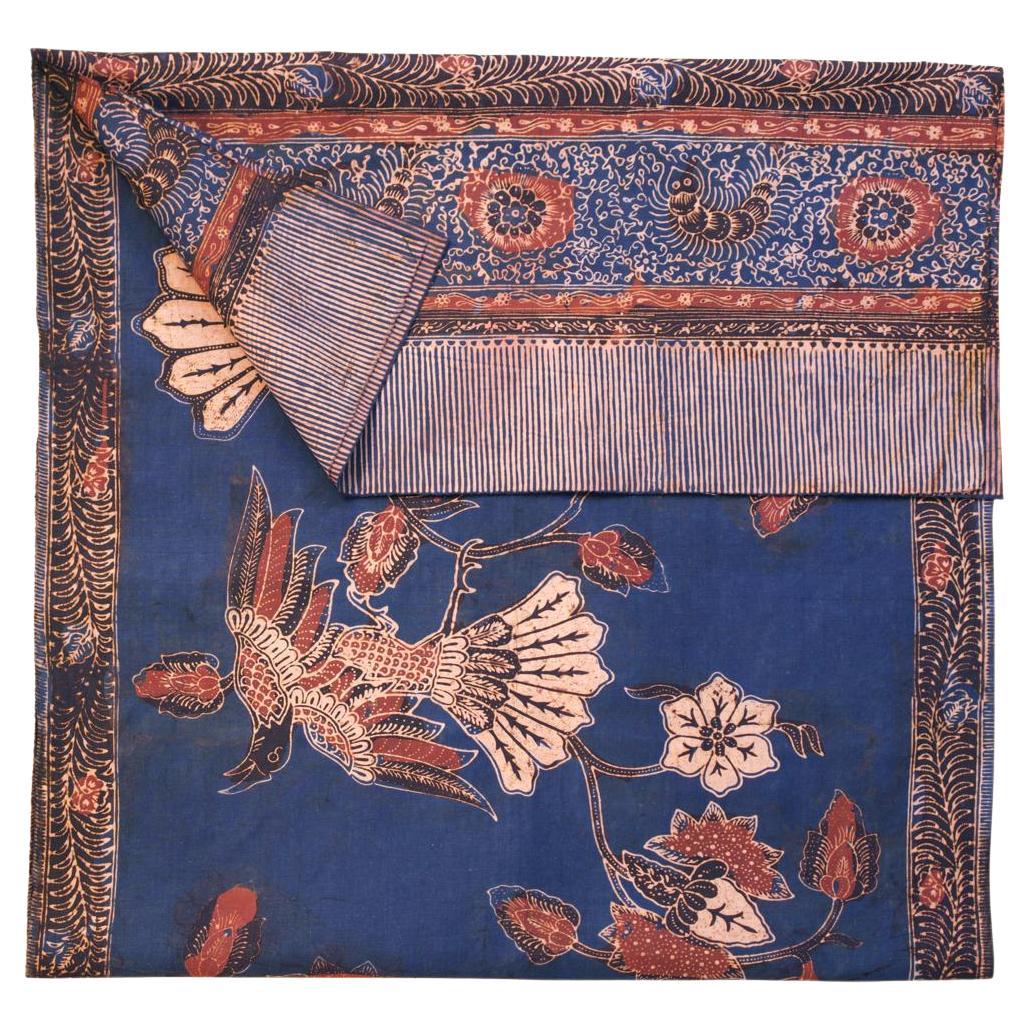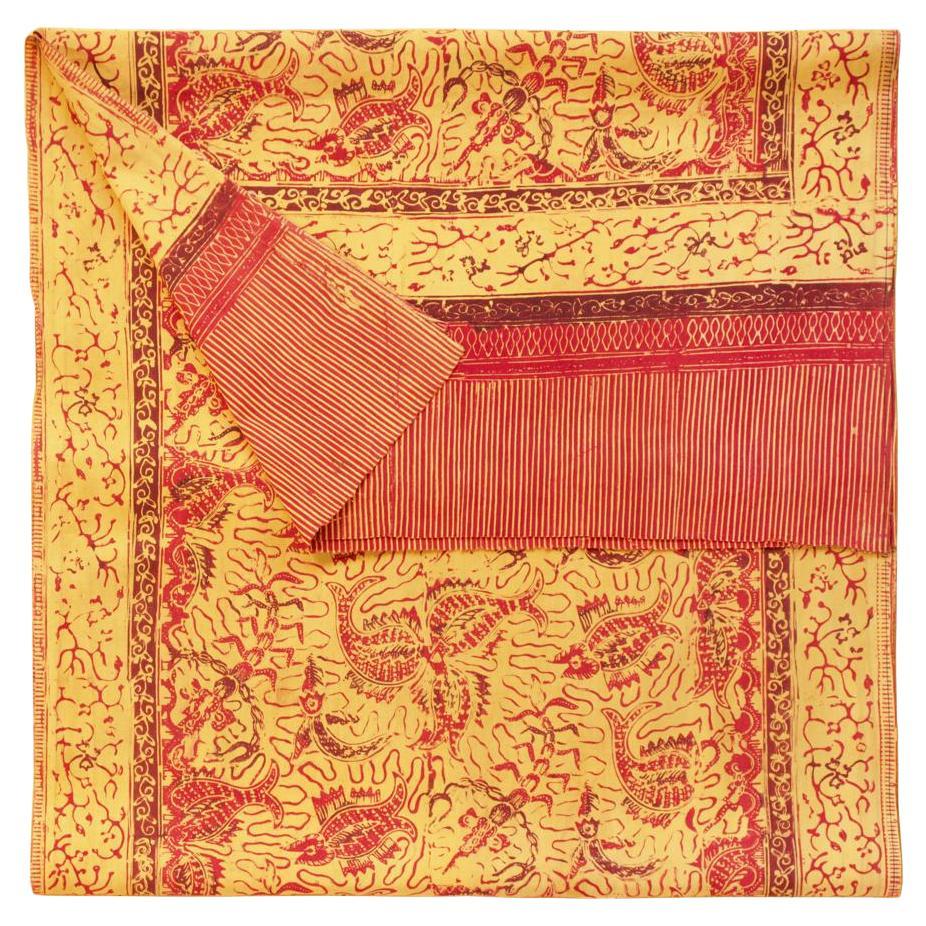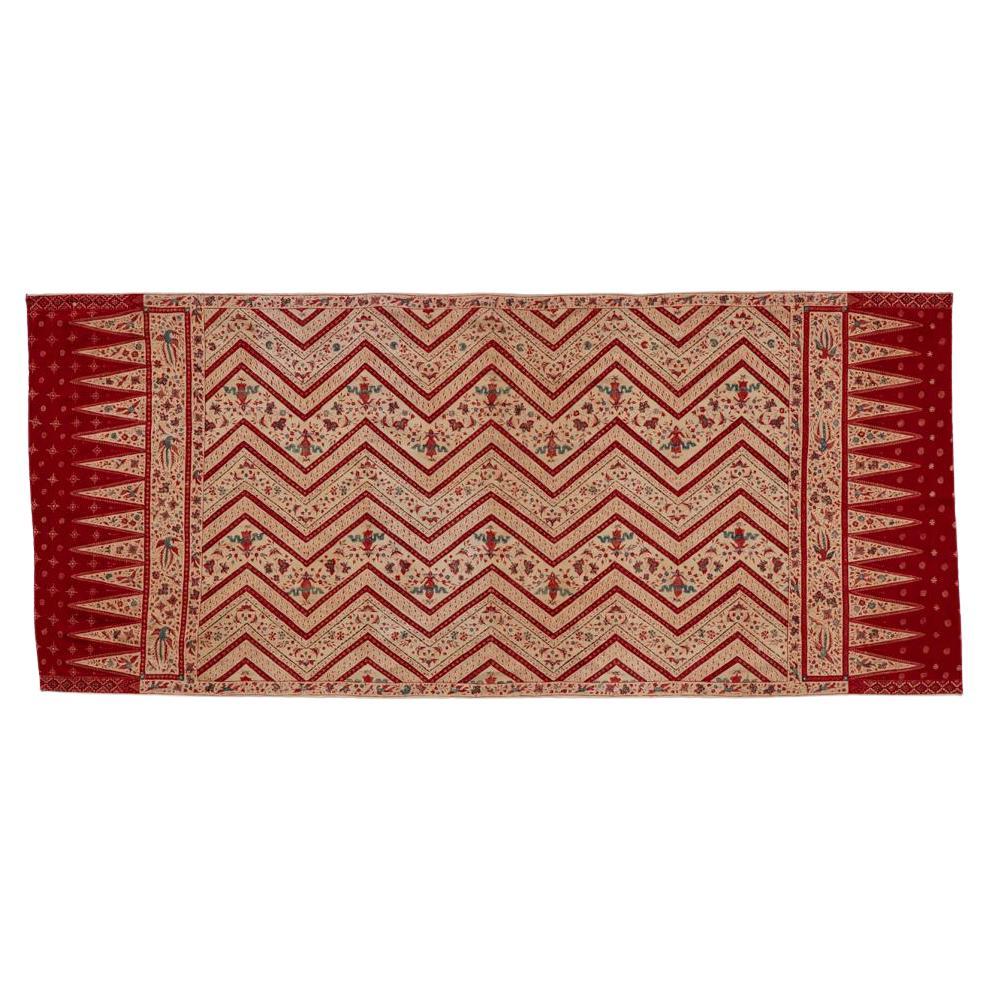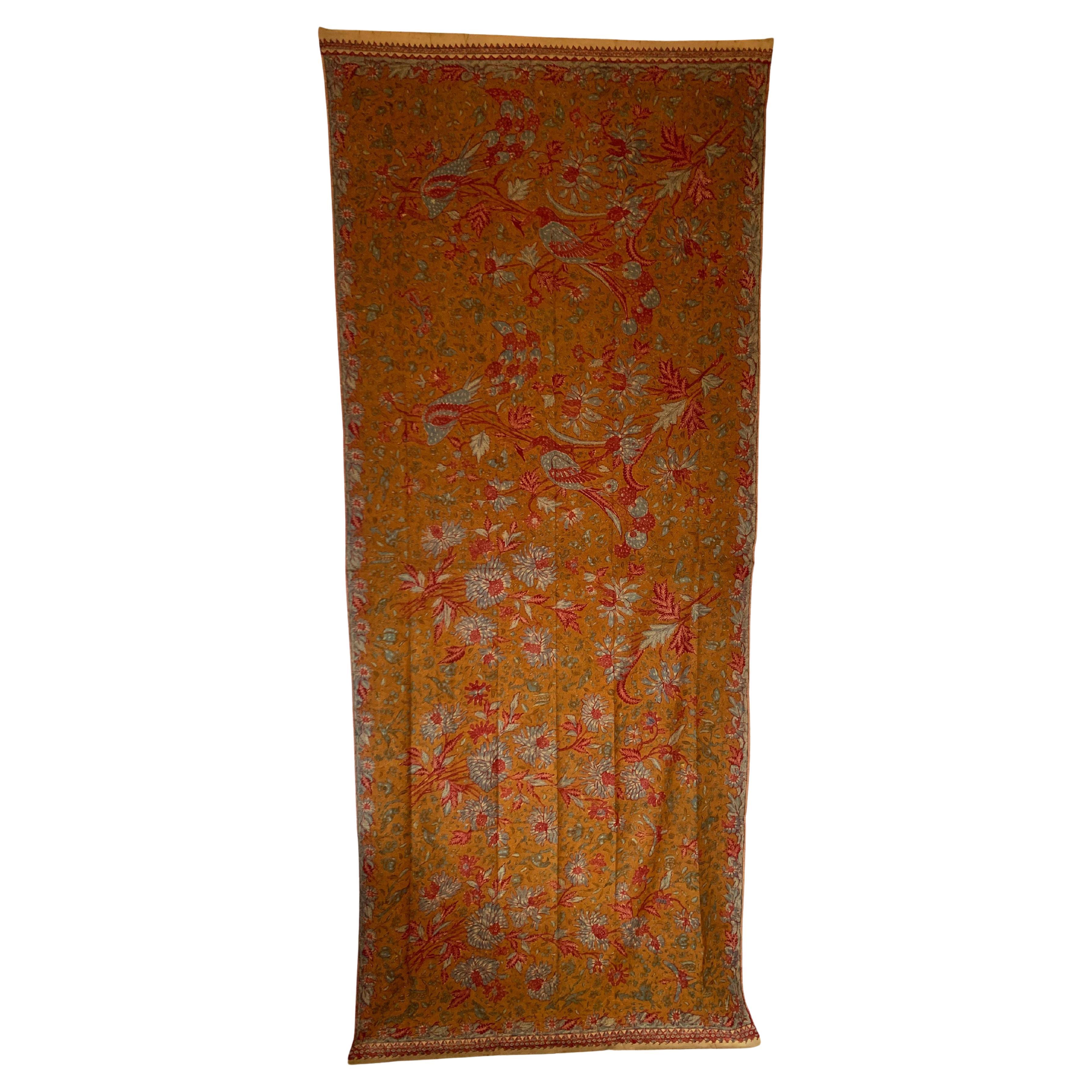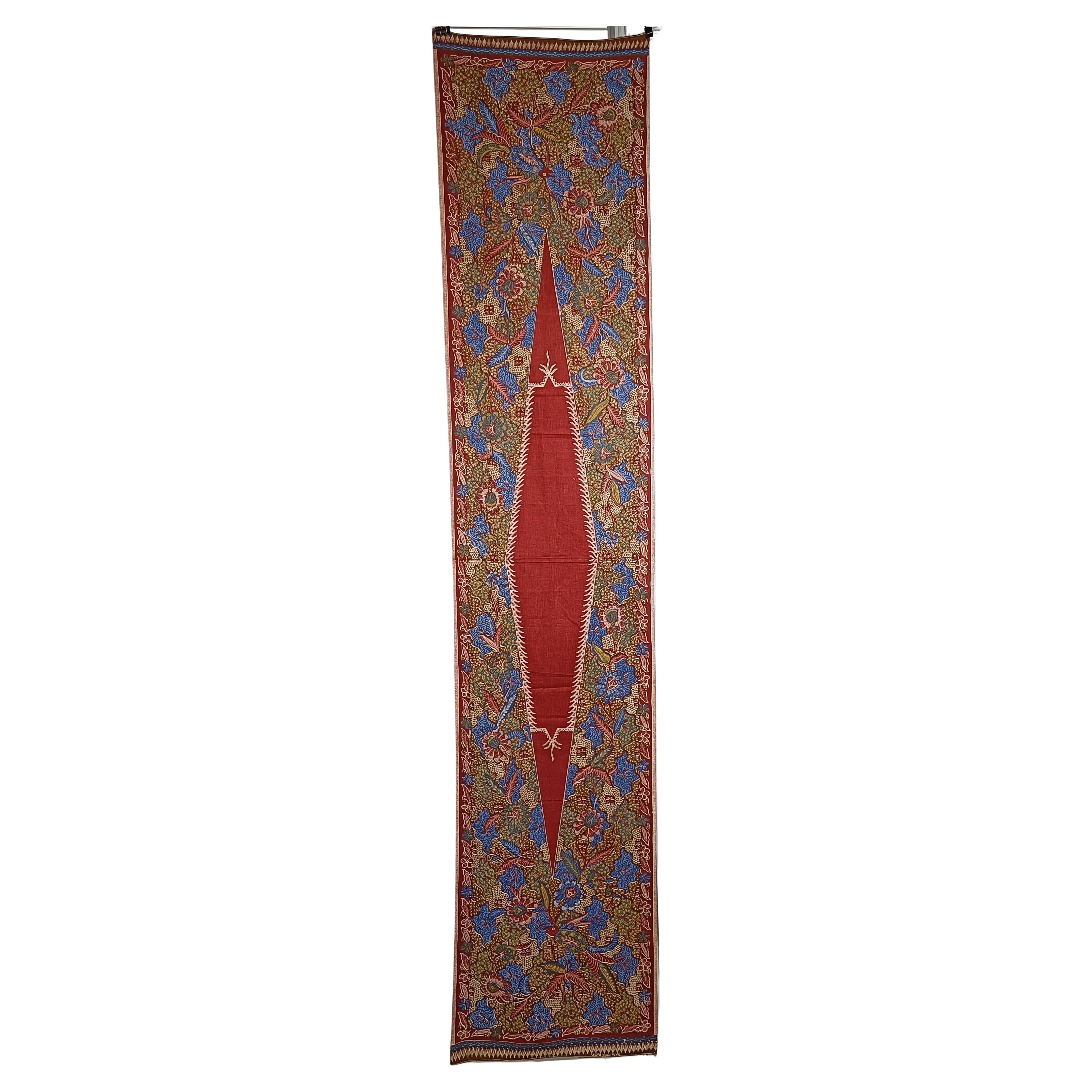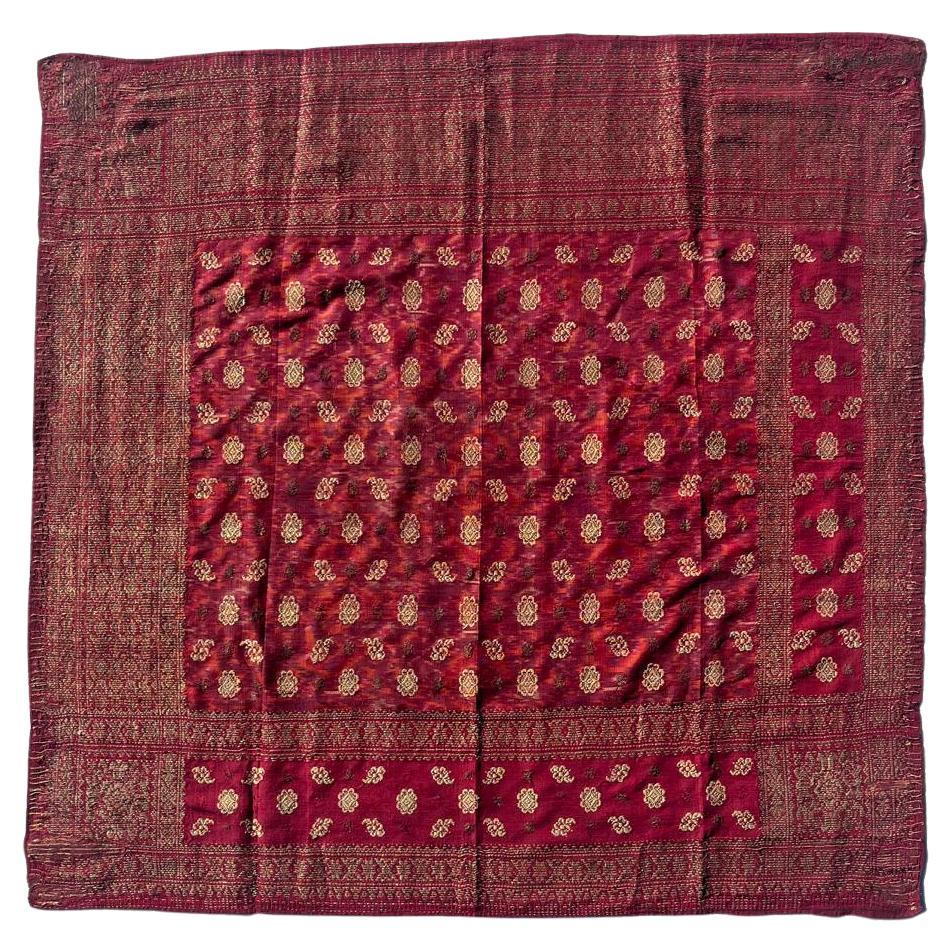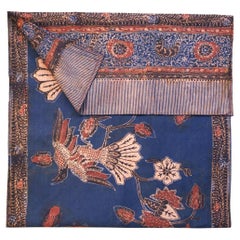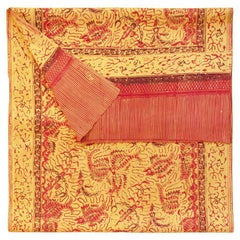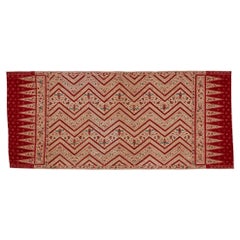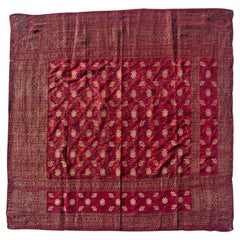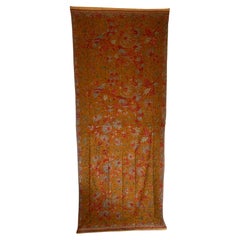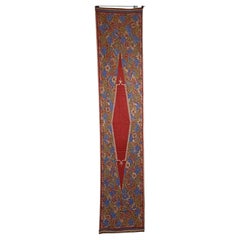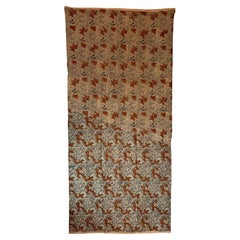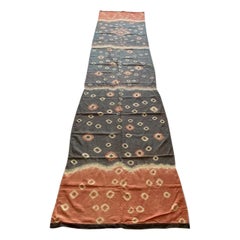Items Similar to Vintage Hand Dyed Cotton Batik Slendang (Selendang), Java
Want more images or videos?
Request additional images or videos from the seller
1 of 7
Vintage Hand Dyed Cotton Batik Slendang (Selendang), Java
$350
£264.35
€305.51
CA$490.93
A$545.96
CHF 285.78
MX$6,660.05
NOK 3,590.99
SEK 3,377.79
DKK 2,280.41
About the Item
Vintage Hand Dyed Cotton Batik Slendang (Selendang), Java. A length of cotton fabric used as a shoulder cloth, hand dyed in two colors: red and blue painted over a wax resist design, created by a combination of tjaps (batik stamps) and hand drawn canting for the frame of floral tendril vines and the interior pattern of flora and fauna tiles.
Condition: Fine.
Size: 20 in. wide x 62 in. long (51 x 158cm)
20th Century.
Provenance: Dr. Philip Gould, New York, NY
- Dimensions:Height: 62 in (157.48 cm)Width: 20 in (50.8 cm)Depth: 0.1 in (2.54 mm)
- Style:Other (Of the Period)
- Materials and Techniques:Cotton,Batik
- Place of Origin:
- Period:
- Date of Manufacture:20th Century
- Condition:Wear consistent with age and use.
- Seller Location:Point Richmond, CA
- Reference Number:Seller: TM-UH803311stDibs: LU1778241778312
About the Seller
5.0
Platinum Seller
Premium sellers with a 4.7+ rating and 24-hour response times
Established in 1999
1stDibs seller since 2015
697 sales on 1stDibs
Typical response time: 2 hours
- ShippingRetrieving quote...Shipping from: Palm Springs, CA
- Return Policy
Authenticity Guarantee
In the unlikely event there’s an issue with an item’s authenticity, contact us within 1 year for a full refund. DetailsMoney-Back Guarantee
If your item is not as described, is damaged in transit, or does not arrive, contact us within 7 days for a full refund. Details24-Hour Cancellation
You have a 24-hour grace period in which to reconsider your purchase, with no questions asked.Vetted Professional Sellers
Our world-class sellers must adhere to strict standards for service and quality, maintaining the integrity of our listings.Price-Match Guarantee
If you find that a seller listed the same item for a lower price elsewhere, we’ll match it.Trusted Global Delivery
Our best-in-class carrier network provides specialized shipping options worldwide, including custom delivery.More From This Seller
View AllVintage Hand Dyed Cotton Batik Slendang (Selendang), Java
Located in Point Richmond, CA
Vintage Hand Dyed Cotton Batik Slendang (Selendang), Java. A length of cotton fabric used as a shoulder cloth, hand dyed in three colors of rust brown, indigo and a dark blue painted...
Category
20th Century Indonesian Other Textiles
Materials
Cotton
Antique Hand Dyed Cotton Batik Slendang (Selendang), Java
Located in Point Richmond, CA
Antique Hand Dyed Cotton Batik Slendang (Selendang), Java. A length of cotton fabric used as a shoulder cloth, hand dyed in three colors: the base dyed golden yellow overall then a v...
Category
Early 20th Century Indonesian Other Textiles
Materials
Cotton
Vintage Pernakan Kain Panjang Batik Tulis, Cirebon, Java 1950
Located in Point Richmond, CA
Vintage Pernakan Kain Panjang Batik Tulis, Cirebon, Java 1950.
A fine hand drawn wax resist painting by canting on cotton of a traditional Java north coast Pernakan zig-zag pattern w...
Category
Vintage 1950s Javanese Folk Art Textiles
Materials
Cotton
Antique Palembang Man's Songket and Ikat Ceremonial Head Cloth (iket kepala)
Located in Point Richmond, CA
Antique Palembang Man's Songket and Ikat Ceremonial Head Cloth (iket kepala).
A woven silk textile with natural dyes, weft ikat pattern, gold thread supplementary weft weave. Textile...
Category
Antique 1880s Indonesian Other Textiles
Materials
Gold, Metallic Thread
Antique Palembang Man's Songket and Ikat Ceremonial Head Cloth (iket kepala).
Located in Point Richmond, CA
Antique Palembang Man's Songket and Ikat Ceremonial Head Cloth (iket kepala).
A woven silk textile with natural dyes, weft ikat pattern, gold thread supplementary weft weave as the b...
Category
Antique 1880s Indonesian Islamic Textiles
Materials
Metallic Thread
Indonesian Vintage Kain Batik Tulis, Solo (Surakarta), Java, 1960.
Located in Point Richmond, CA
Indonesian Vintage Kain Batik Tulis, Solo (Surakarta), Java, 1960.
A traditional hand drawn wax resist painting by canting on cotton, dyed in three colors. beige, dark indigo blue an...
Category
Vintage 1960s Indonesian Folk Art Textiles
Materials
Cotton
You May Also Like
Hand-Drawn Batik Textile, from Java Indonesia
Located in Jimbaran, Bali
A fine example of a batik textile from Solo, Java, Indonesia. This textile features wonderful detailing & contrast. It features a wonderful array of flor...
Category
Early 2000s Indonesian Other Textiles
Materials
Cotton
Antique Batik Tulis Temben Cloth Tiga Negri Indonesia Asian Textiles Home Decor
Located in London, GB
Antique Batik Tulis Kemben Cloth – Tiga Negri Style – Hand-Drawn Wax Resist Textile, Indonesia (1930s)
An exceptional example of traditional Indonesian textile artistry, this antiq...
Category
Early 20th Century Indonesian Textiles
Materials
Cotton
Hand-Drawn Batik Textile, from Java Indonesia
Located in Jimbaran, Bali
A fine example of a batik textile from Solo, Java, Indonesia. This textile features wonderful detailing & contrast. It features a wonderful array of flor...
Category
Early 2000s Indonesian Other Textiles
Materials
Cotton
Linen and Cotton Antique Textile from Toraja Land
Located in New York, NY
Striking "pelangi" tie-dyed textile from Toraja Land, South Sulawesi. We added a linen border, double backed on both ends. This beautiful panel can be used as a wall hanging, draped ...
Category
Mid-20th Century Indonesian Tribal Textiles
Materials
Cotton, Linen
Hand-Drawn Batik Textile, from Java Indonesia
Located in Jimbaran, Bali
A fine example of a batik textile from Solo, Java, Indonesia. This textile features wonderful detailing & contrast. It features a wonderful array of flor...
Category
Early 2000s Indonesian Other Textiles
Materials
Cotton
Ceremonial Cloth 'Tapis' of Lampung
Located in Roma, IT
This ceremonial cloth 'Tapis' of Lampung is in silk and cotton with golden strings.
A very similar tapis is at the Asian Art Museum of San Francisco (...
Category
Mid-20th Century Indonesian Modern Textiles
Materials
Gold
$1,468 Sale Price
28% Off
More Ways To Browse
Java Furniture
Vintage Batik
Indonesian Batik
Wax Resist
Batik Fabric
Vintage Batik Fabric
Batik Java
Framed Batik
Vintage Batik Indonesia
Vintage Batik Stamps
Antique Chinese Silk Embroider
Marriage Bed
1970 Kaftan Moroccan
Printing Block Asian
Vintage Hand Embroidered Table Cloth
Moroccan Caftans
Moor Bust
Indonesian Batik
